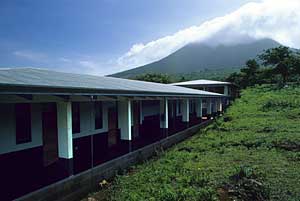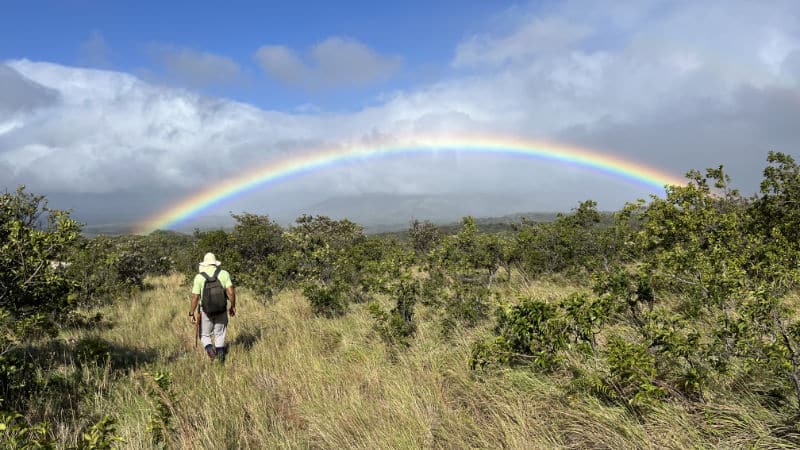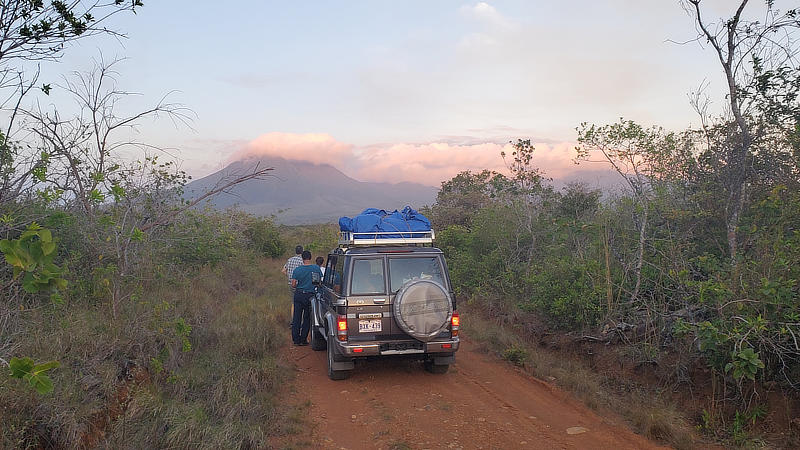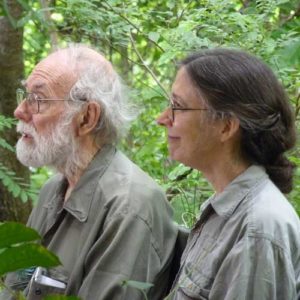Maritza Biological Station
“Lying beneath an old-growth forest, in the shadow of an dormant volcano, with daily rainbows and spectacular sunsets over the Pacific — and at least six good streams within an easy walk in either direction — Maritza Biological Station is a stream ecologist’s dream. Now, decades after its creation as the hub of the Stroud Center’s tropical program, we still drink the water straight from the streams and still use them as the yardstick to measure the quality of fresh water throughout Central and South America.” — Bern Sweeney, Ph.D.
In 1987, Dan Janzen, the renowned evolutionary biologist, invited Stroud Water Research Center to establish a tropical water research laboratory in northwestern Costa Rica.
The proposed research station would complement the huge Área de Conservación Guanacaste, which he and his wife, Winnie Hallwachs, had recently proposed to the Costa Rican government. Janzen had begun assembling vulnerable parcels of land in the early 1970s, with the goal of establishing an area large enough to preserve the region’s vast biological diversity. He wanted in addition to create a replicable blueprint for conserving natural resources, protecting endangered species, and engaging local communities, particularly those who lived in areas whose critical habitats were vulnerable to powerful external forces.
Janzen’s invitation excited Stroud Center scientists and supporters. Until then, almost all research into the dynamics of freshwater ecosystems had taken place in temperate watersheds, and the proposed venture would give them a base from which to understand some of the world’s most vulnerable, varied, and unexplored sources of fresh water.
Things happened quickly after Janzen’s invitation. Within a year, the Stroud Center had raised the funds and worked closely with Janzen to convert a small farm near the base of the Orosí Volcano into a laboratory and education facility called Maritza Biological Station. In 1989, Janzen and Hallwachs’ dream of the Área de Conservación Guanacaste became a legal reality. On March 22, 1991, Costa Rica’s President Rafael Calderon dedicated Maritza Station as a permanent freshwater research facility.

In time, the streams flowing through the station would, like White Clay Creek, become a Long-Term Research in Environmental Biology site funded by the National Science Foundation. To date, those streams have generated more than 30 peer-reviewed scientific papers. Área de Conservación Guanacaste is now a UNESCO World Heritage Site, protecting an estimated 375,000 species, and Maritza Station has become the headquarters for the Stroud Center’s tropical ecosystem studies. From there, its research projects and education programs have spread to other parts of Central and South America, while the station itself has become a resource for scientists, teachers, and land managers throughout the region.
Since the early 2000s, a Costa Rican nonprofit led by Steve Stroud, Asociación Centro de Investigación Stroud (ACIS), has overseen legal and administrative matters at Maritza for the Stroud Center. Rafael Morales Cueto is the field station manager and lead technician at Maritza. Since 1989, Maritza and ACIS have been the headquarters and foundation for the Stroud Center’s tropical research programs throughout Central and South America.
- Learn more about the Costa Rica Long-Term Research in Environmental Biology project.
- Learn more about our international research.
Maritza News

Seasonal and longitudinal dynamics of DOM within headwater streams of a tropical evergreen forest

Institute Profile: Stroud Water Research Center

Tropical Freshwater Research Unlocks One of Nature’s Secrets

College Students Travel to Costa Rica With Stroud Center Team

Spatial scale impacts microbial community composition and distribution within and across stream ecosystems in North and Central America


